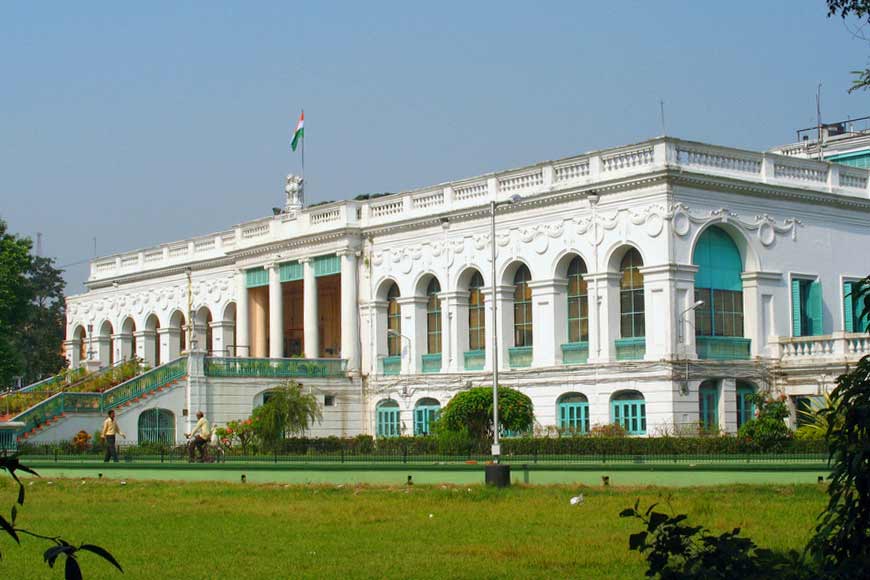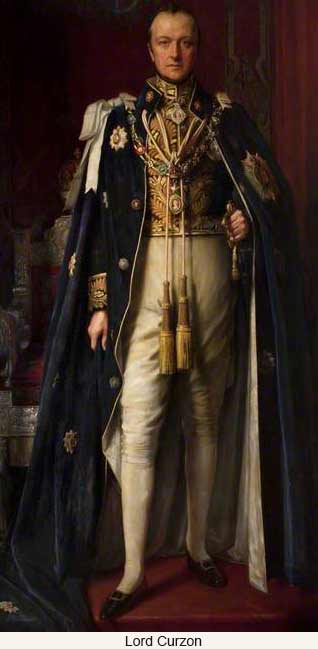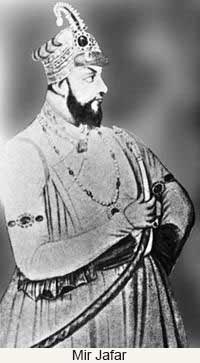How are Mir Jafar and Lord Curzon associated with Kolkata’s National Library?

“Libraries always remind me that there are good things in this world.” – Lauren Ward (American singer and actress)
The aristocratic Belvedere Garden House in Alipore is a holy pilgrimage for any bibliophile. Housed within the expansive Belvedere Estate is the sprawling National Library, the country’s largest library by volume and public record. With a collection in excess of 2.2 million books and records and growing daily, the ‘National Library’ is by far the country’s most exhaustive library.
The names of two prominent tarnished personalities from Indian history are associated with this library -- Syed Mir Jafar Ali Khan Bahadur (1691–1765) and Lord George Curzon (1859-1925). Mir Jafar was the military general in the battle of Plassey (1756) who conspired with the British to depose the last independent Nawab of Bengal, Siraj-ud-Dullah and capture the throne with the help of the British. British Conservative statesman, Lord Curzon who was the Viceroy of India from 1899 to 1905 was instrumental for the Partition of Bengal (1905). Interestingly, both these men were instrumental in growth and development of National Library.
 After Nawab Siraj-ud-Dullah’s defeat in the Battle of Plassey and subsequent execution, Mir Jafar achieved his long-pursued dream of gaining the throne and was propped up by the East India Company as a puppet Nawab. Soon, however, he realized that company's expectations were boundless and tried to wriggle out from under them; this time with the help of the Dutch. However, the British defeated the Dutch at the Battle of Chinsurah in November 1759 and retaliated by forcing Mir Jafar to abdicate his throne at Murshidabad in favor of his son-in-law, Mir Qasim and relocate to Kolkata.
After Nawab Siraj-ud-Dullah’s defeat in the Battle of Plassey and subsequent execution, Mir Jafar achieved his long-pursued dream of gaining the throne and was propped up by the East India Company as a puppet Nawab. Soon, however, he realized that company's expectations were boundless and tried to wriggle out from under them; this time with the help of the Dutch. However, the British defeated the Dutch at the Battle of Chinsurah in November 1759 and retaliated by forcing Mir Jafar to abdicate his throne at Murshidabad in favor of his son-in-law, Mir Qasim and relocate to Kolkata.
In Calcutta, Jafar settled within the safety of English East India Company fortifications at Alipore. Prince Azim Khan, grandson of Aurangzeb and son of Bahadur Shah Zafar I, had built the Belvedere Garden House in 1700 as his residence. Mir Jafar took over this palace and later built several palatial buildings in the area and he gifted Belvedere House to Warren Hastings. Later, Hastings sold Belvedere House to Major Tolly in the 1780s for a princely sum of Rs. 60,000. Major Tolly died in 1784 and his family sold the property in 1802. Belvedere House was the former palace for the Viceroy of India and later the Governor of Bengal.
The Governor-General resided in Belvedere House, Kolkata until the early 19th century, when Government House (present Raj Bhavan) was constructed. In 1854, after the Governor-General moved out, the Lieutenant-Governor of Bengal took up residence in Belvedere House. When the country’s capital moved from Kolkata to Delhi in 1912, the Lieutenant-Governor of Bengal was upgraded to a full governor and transferred to Government House.
After Independence, the Indian government changed the name of the Imperial Library to National Library and the collection of books was transferred to the current Belvedere Estate from Esplanade. The National Library was opened to the general public on February 1, 1953, though the process of setting up a centralized library was initiated way back in 1838 when the Calcutta Public Library was established at Esplanade with many Bengali babu promoters like Babu Rasik Krishna Mallick and Babu Rasamoy Dutta.
While, the Imperial Library was established in 1903. But public access to both the libraries was restricted. High-ranking government officials and the elite were the users of these two libraries. The then Viceroy and Governor General, Lord Curzon wanted to change this situation and he took the initiative to fuse Calcutta Public Library with the Imperial Library in 1903. The reading library was inaugurated on January 30, 1903. It started operation from Metcalfe Hall. In 1923 the library moved to Esplanade East. During World War II, the library was again temporarily shifted to Jabakusum House for security reasons. After the War was over, the library again shifted to its previous premises at Esplanade.
 The National Library houses more than 20 million books in different languages along with 20,000 magazines. The library has also been augmented with personal collections of bibliophiles donated at different times. Sir Ashutosh Mukherjee was appointed the President of the Imperial Library Council in 1910 and he donated his own collection spanning 80,000 books to the establishment. Prominent Indian historian, Sir Jadunath Sarkar also donated his vast collection of books to the library.
The National Library houses more than 20 million books in different languages along with 20,000 magazines. The library has also been augmented with personal collections of bibliophiles donated at different times. Sir Ashutosh Mukherjee was appointed the President of the Imperial Library Council in 1910 and he donated his own collection spanning 80,000 books to the establishment. Prominent Indian historian, Sir Jadunath Sarkar also donated his vast collection of books to the library.
The Belvedere Estate ground on which the National Library stands, was the site of a duel between Warren Hastings and his legal officer, Philip Francis held on August 17, 1780. The duel may have been over Baroness Von Imhoff, who was staying with Hastings then. Australian historian, Arthur Staples, however, insists that the duel was the outcome of political conflict between the two. A hidden chamber was discovered within it in 2010 and engineers unearthed a secret ground floor room of 1,000 sq ft, which seemingly did not have any opening and was previously unknown.











